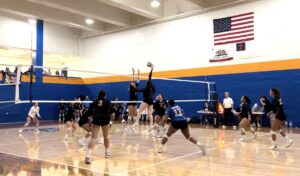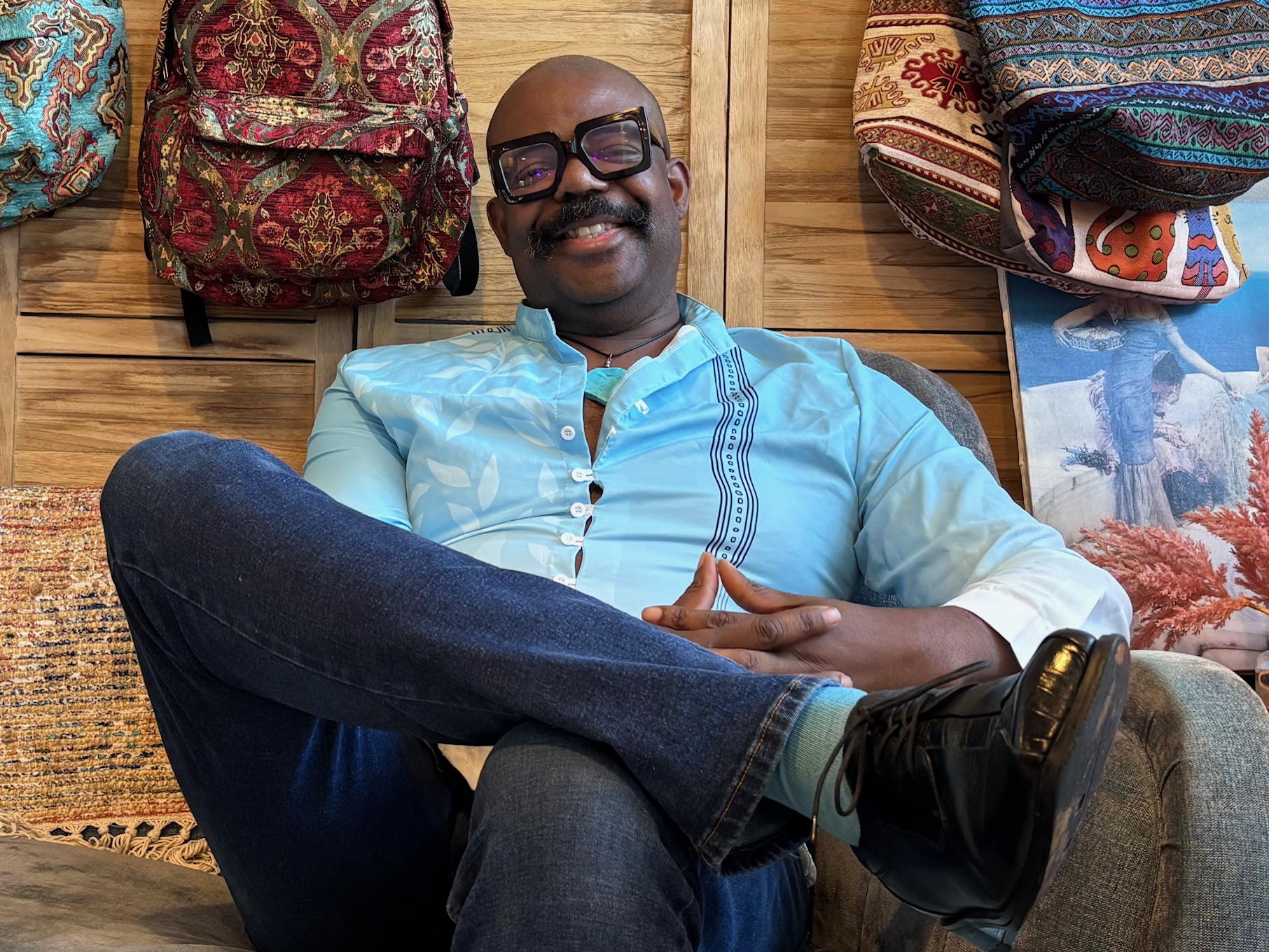Tristan Stuetzel was on his way to a high school baseball game when he saw an Instagram post that changed his plans for the next four years. Providence Christian College, a private liberal arts school in Pasadena, Calif., where he had committed to play baseball, had just announced it was cutting all athletics.
No call. No email. Just a quiet social media post with comments turned off within hours of its publication.
“I felt my stomach drop,” the 18-year-old said. “It was totally unexpected.”
The shock quickly turned to heartbreak.
“I didn’t get to have a commitment party or a signing day,” he remembers. “I didn’t get to celebrate my hard work or share that special moment with my parents. I’m now one month away from college and have nowhere to go.”
Stuezel was one of the dozens of athletes recruited to the institution, comprised of both incoming and returning, who were blindsided by the shocking decision. He said he has not heard from the school since his recruitment, and with the Fall fast approaching, he’s still searching for a new college to call home.
![Former Providence baseball recruit, Tristan Stuetzel, competes during a high school game. [Credit: Tristan Stuetzel]](https://theclick.news/wp-content/uploads/2025/07/tristan-292x300.jpeg)
Former Providence baseball recruit, Tristan Stuetzel, competes during a high school game. [Credit: Tristan Stuetzel]
Inside the Decision
But Providence is not the only smaller-scale college making similar major alterations. Institutions like the University of Antelope Valley, the University of Saint Katherine, and Marymount California University have also shut down entirely or scaled back operations in recent years — many citing financial instability and plunging enrollment. For schools where the athletic department fostered community, identity, and even enrollment itself, these high-risk cuts come with genuine human costs.
Baseball coach Eric Fuller, whose team had just come off the most successful season in school history, said he was stunned.
“Baseball was financially profitable for the school,” he said. “We were already doing well with limited resources, and we were projected to get better. But suddenly, it was gone.”
Providence’s decision was not made lightly, according to President Steve Kortenhoeven, who was part of the college’s founding staff and the very first Dean of Students. Kortenhoeven said the decision stemmed from the school’s recent probationary status with the Accrediting Commission for Schools, Western Association of Schools and Colleges. In a shift to focus on Providence’s founding mission, the executive team — made up of the vice presidents of finance, academics, and facilities — was forced to make “significant” changes to demonstrate long-term sustainability, Kortenhoeven said.
Kortenhoeven, who established the athletics program at Providence in 2015, also noted that while the decision to cut sports was drastic, it was “necessary”.
“This has been a difficult year for Providence and for all institutions of higher education across the country,” he said. “Most colleges are trying to run more efficiently and refocus on their core mission.”
The college — which has an enrollment of just under 150 undergraduate students — first consulted with major donors about the fruition of the decision while the board’s executive committee was kept informed throughout.
While the decision shocked staff and students alike on campus, Kortenhoeven emphasized that it was about preserving Providence’s long-term vision: focusing on classical academics rooted in Reformed Christian theology. He also noted that student-athletes who chose to remain at Providence would keep their scholarship packages.
Kortenhoeven acknowledged the disappointment but said the administration prioritized transparency and the institution’s longevity. He told The Click that “the student-athletes were always in our mind throughout this decision.”
“We looked at every option to retain athletics because we wanted to retain, educate, and support these students through their graduation,” the President assured. “After exhausting every option and making the final decision, we wanted to announce it as quickly as possible so that students could explore transfer options before the end of the academic year. One option was to wait until the June board meeting to make this decision, but we decided against that because it would’ve put the students who wanted to transfer in an even worse position.”
He added, “We fully recognized the impact that this decision had on each [student-athlete], and we wanted to fulfill our academic commitment to ensure that they could graduate from Providence, if they so desired.”
Despite sports having sailed away for the Sea Beggars, Kortenhoeven says a return is possible in the future, especially as the school eyes a new campus design in North County San Diego, which includes dedicated athletic facilities. There, the plans would financially include athletic facilities such as a gym, track, and field, rather than relying on costly rentals for every practice and game.

Providence’s 2023-24 women’s volleyball team competes in a CALPAC conference match. [Credit: Valeria Garcia]
The Human Cost
Just six weeks prior, the golf and soccer programs had been eliminated. Fuller says he was reassured by the Chief Financial Officer that the baseball and volleyball programs would remain as sports at the institution. The catch was that their status as National Association of Intercollegiate Athletics members would be dropped, meaning Providence’s teams would cease competing against other schools in an association. In short, the school would move toward less competitive forms of those remaining teams, like intramural or club sports, had they not been eliminated.
“The decision to cut sports was a little financial, mostly strategic. The school wants to focus on the one thing they can do well with limited resources,” Fuller said, referring to academics.
His son Kyle was a senior on the team. He had restructured his graduation status and courses in order to play a fifth year with the Sea Beggars. After the successful spring season, the captain etched his name into Providence baseball’s career record books in seven different categories. The six-foot-four infielder recorded 176 total bases, 25 doubles, and 74 RBI’s, among other impressive feats for a collegiate athlete.
“He wanted to finish out his career as a Sea Beggar and help lead the team to a playoff appearance,” the coach said of his son. “It’s left both a sour taste in our mouths, yet a gratefulness that we were part of something that shattered expectations.”
Now, Kyle is faced with making a decision with his final year of eligibility as he searches for a team, and trying to find a school to transfer to that will accept his credits from Providence.
For incoming freshman Tristan, the decision felt like a betrayal because he “was 100% committed to Providence purely because of the baseball program.”
Tristan, who was adopted at age seven and helped raise his younger brother, admitted that baseball was his life. The outfielder/utility player said it was part of his story of overcoming the odds.
“From a young age, I was always told that, because of my background, I was predisposed to fail,” he told The Click. “I worked harder than everyone else so I could change that narrative.”
For rising junior Christopher Gonzalez, “Baseball was more than just a sport. It was a community of guys together who had proven what buying into a program really means. I’ve made friends for life.”
Chris, like many former student-athletes at Providence, is also searching for a new school to lend his talents to. He worries about more than just athletics; rather, institutional trust.
A New Vision
Along with the athletics program, the California-based school also announced it would cut its Health and Life Sciences track, one of seven concentrations under the singular major, liberal arts, offered by the institution.

Standout LHP Christopher Gonzalez pitches for Providence Christian mid-match. [Credit: Christopher Gonzalez]
Providence’s leadership hopes that its shift towards classical, confessionally Reformed academics will stabilize the school. Still, the cost is very real. Especially for student-athletes who built their identity around their team and expected the school’s promises to hold.
“My heart hurts for those players that don’t have any other options,” said Coach Fuller, “It was a great ride and I’m thankful for their buy-in. It’s a brotherhood I’ll always look back on with pride.”
For colleges like Providence, the loss of athletics isn’t just a cultural blow — it’s an existential one.
As reported by The Chronicle of Higher Education, at smaller-scale institutions, student-athlete participation can range from 34-51% making sports a key driver for enrollment and campus identity. Abolishing those programs could mean cutting the main reason students enroll in the first place, as noted by Providence’s former baseball recruit, Tristan.
The collapse at Providence is part of a broader unraveling of financial and institutional support across small liberal arts colleges and private universities alike.
The University of Saint Katherine, a private, Christian university in San Marcos, Calif. — which was in the same athletic conference (CALPAC) as Providence — announced in April 2024 that it would cease operations immediately due to being unable to keep up with costs. Per the school’s statement, mounting staff costs and athletics programs falling significantly over budget put the nail in the coffin. Approximately 95% of the student body were athletes.
Frank Papatheofanis, the institution’s president, told NBC San Diego that USK was “forced to terminate employees because we didn’t have sufficient funds available to pay them. We had recent unexpected expenses that depleted our reserves.” He added, “Asking them to continue work activities knowing we did not have those resources is fraud.”
The University of Antelope Valley, which also competed in the CALPAC, made headlines in March of 2024 when the California Bureau for Private Postsecondary Education ordered the institution to halt operations due to its “severe financial position.”
That shocking decision came just seven months after the WASC Senior College and University Commission (WSCUC) placed the Lancaster, Calif. based institution on probation in August 2023, claiming that the school was “not financially sound”, had “insufficient administration”, and “insufficient facilities.” Students were left baffled that a shutdown could have occurred so quickly, as just a week prior, UAV had moved to an online-only learning model.
Marymount California University is another example, also previously a CALPAC member. The private Catholic institution, known for its stunning cliffside views in Rancho Palos Verdes, Calif., closed its doors in August 2022 after struggling with budget shortcomings and low enrollment numbers, as well as the impact of the COVID-19 pandemic.
Discussing the closure, Brian Marcotte, the university’s president, predicted to the LA Times: “I think [closing is] going to be a trend with smaller, private institutions that are going to be under additional pressure.”
From Local Losses to a Larger Crisis
Even larger universities have begun making targeted cuts. Grand Canyon University, a private Christian college with tens of thousands of students, went viral on social media after cutting the DI men’s volleyball program as a varsity sport competing in the NCAA. Despite its success in the box scores, the school cited cost efficiency and program restructuring as its reasons.
And it’s not just faith-based institutions. Colleges across the country — large and small, public and private — are grappling with enrollment declines, financial strain, and shifting demographics.
While data is limited specifically to faith-based institutions, the closures reflect a broader trend across private colleges. According to The Chronicle of Higher Education, more than 30 private institutions have closed or merged since 2020, many citing unsustainable financial models. Best Colleges reported that nearly 80 private nonprofit colleges have shut down or merged in the last five years. Many of these include religiously affiliated schools, such as Marymount California University and the University of Saint Katherine.
Yet at many small colleges, athletics have become central to survival. According to the Council of Independent Colleges, the average number of student-athletes per school rose significantly over the past two decades, from about 240 to nearly 400. For tuition-driven institutions, sports aren’t just about school spirit — they help fill seats and keep the lights on. Cutting them can deepen the very budget crises colleges are trying to avoid.
The Mistrust in Higher Education
These financial and institutional shifts aren’t happening in a vacuum. Leaders at schools like Providence say the problem is bigger than campus decisions, pointing to national policy moves that could make staying in business even harder.
President Kortenhoeven warned that “instability at the federal level” could significantly reshape education, citing federal efforts that began “dismantling the Department of Education.”
Back in March, President Donald Trump signed an executive order to begin gutting the DOE, ordering US Secretary of Education Linda McMahon to “take all necessary steps to facilitate the closure of the Department of Education and return authority over education to the States and local communities,” per EdSource.
The stakes are particularly higher in red states like Mississippi, where federal aid accounts for over 23% of K-12 educational budgets, compared to New York’s 7%, according to USA Facts.
The DOE also oversees subsidized loans and Pell Grants, which help millions of students pay for college. With reduced staff to direct these programs and accessibility issues, delays could stand in the way of those seeking higher education.
Camarillo-based high school educator Kate Blumenthal echoed these concerns, noting that potential ripple effects may make college even more out of reach for some. She also expressed the need to emphasize the importance of quality education to students.
“America is not going to be great if we don’t have educated people who know how to work in these industries, who know how to innovate — America’s going to fall behind,” she said. “Other countries that are investing in education are the ones who are going to surpass us.”
As small liberal arts colleges and universities follow the national trend of cuts and closures, the cost of survival is growing harder to ignore.


